Abstract
1. The action of adrenaline, noradrenaline and efferent sympathetic fibres on the smooth muscle of the lower oesophageal sphincter (l.o.s.) was studied in vivo on the anaesthetized cat and in vitro with the sucrose gap method. 2. Adrenaline and noradrenaline produce a marked depolarization of the circular muscle of the l.o.s. This effect is suppressed by dihydroergotamine or phentolamine, and greatly reduced by atropine; it remains unaltered by hexamethonium. 3. Sympathetic fibres are excitatory for the l.o.s. They come from the stellate ganglion or run along the splanchnic nerve: the fibres arising from the stellate ganglion (mainly by the cardiac branch of the ganglion) join the vagus nerve at the thoracic level; the fibres running along the splanchnic nerve pass through the coeliac ganglion without synapsing; their cellular bodies lie probably in the ganglia of the sympathetic chain. 4. Repetitive stimulation (20--40 Hz) of these fibres induce, with a latency of 5--8 sec, a sustained or rhythmic contraction of the l.o.s. This response is suppressed by dihydroergotamine, and greatly reduced by atropine, while hexamethonium has no effect. 5. Stimulation of sympathetic fibres induces a facilitation of the vagal excitatory responses and an inhibition of the vagal inhibitory responses of the l.o.s. 6. Our data show that the sympathetic response of the l.o.s. results from the stimulation of adrenergic receptors which are located not only on muscular fibres but also, and chiefly, on intrinsic neurones. Thus, the sympathetic control of the l.o.s. is mainly exerted through cholinergic myenteric neurones which could be excited either directly or indirectly by inhibition of inhibitory intrinsic neurones.
Full text
PDF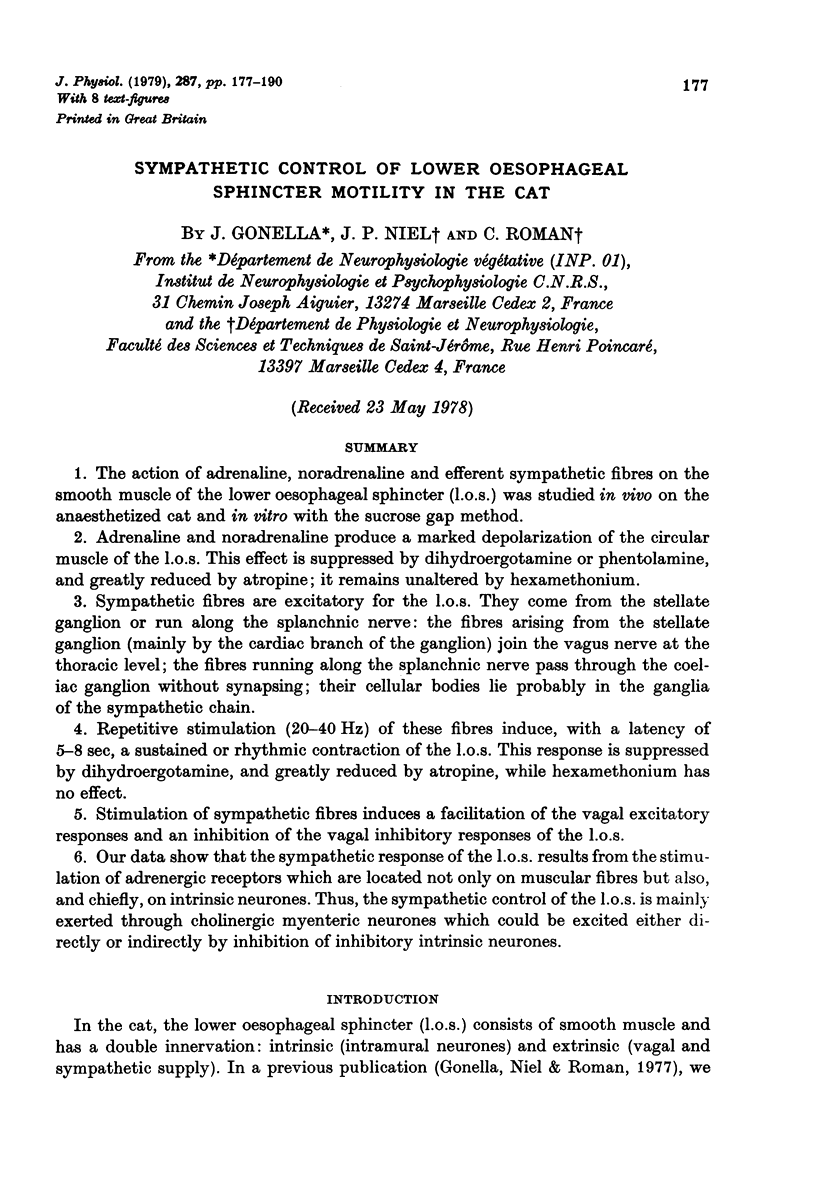
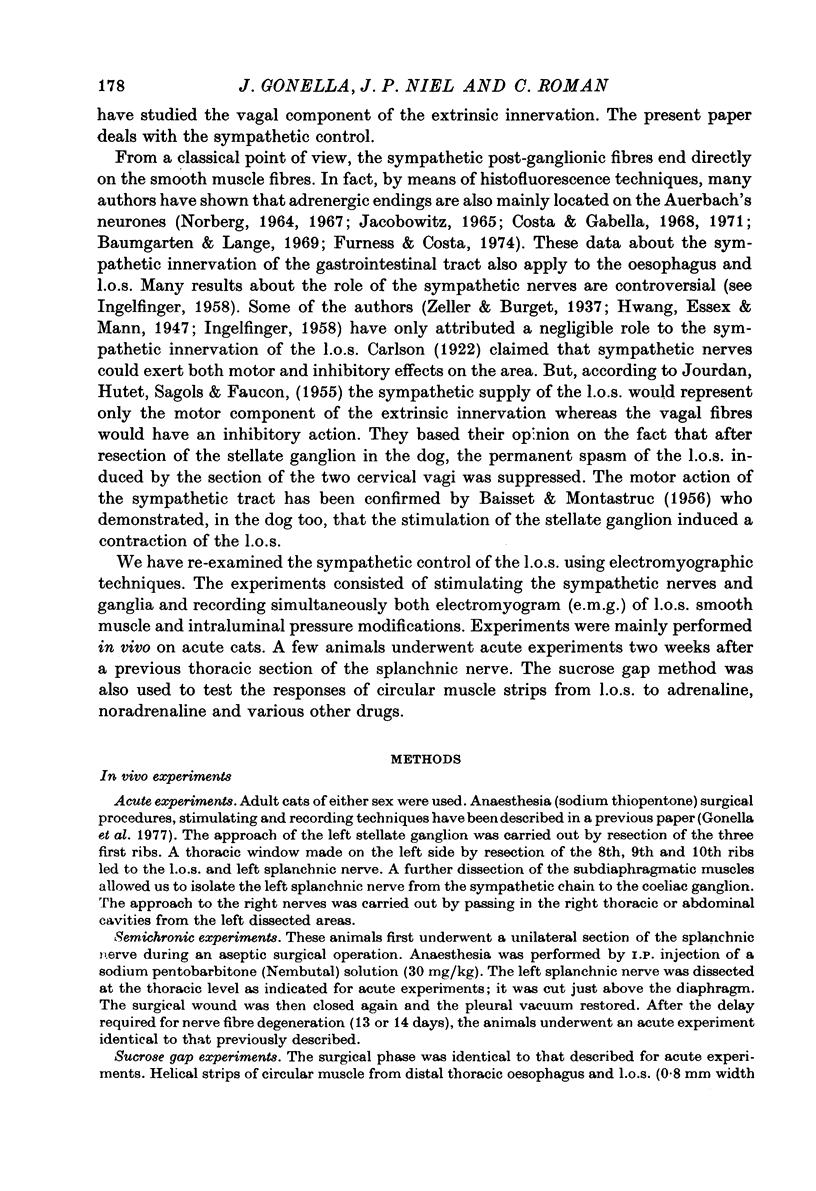
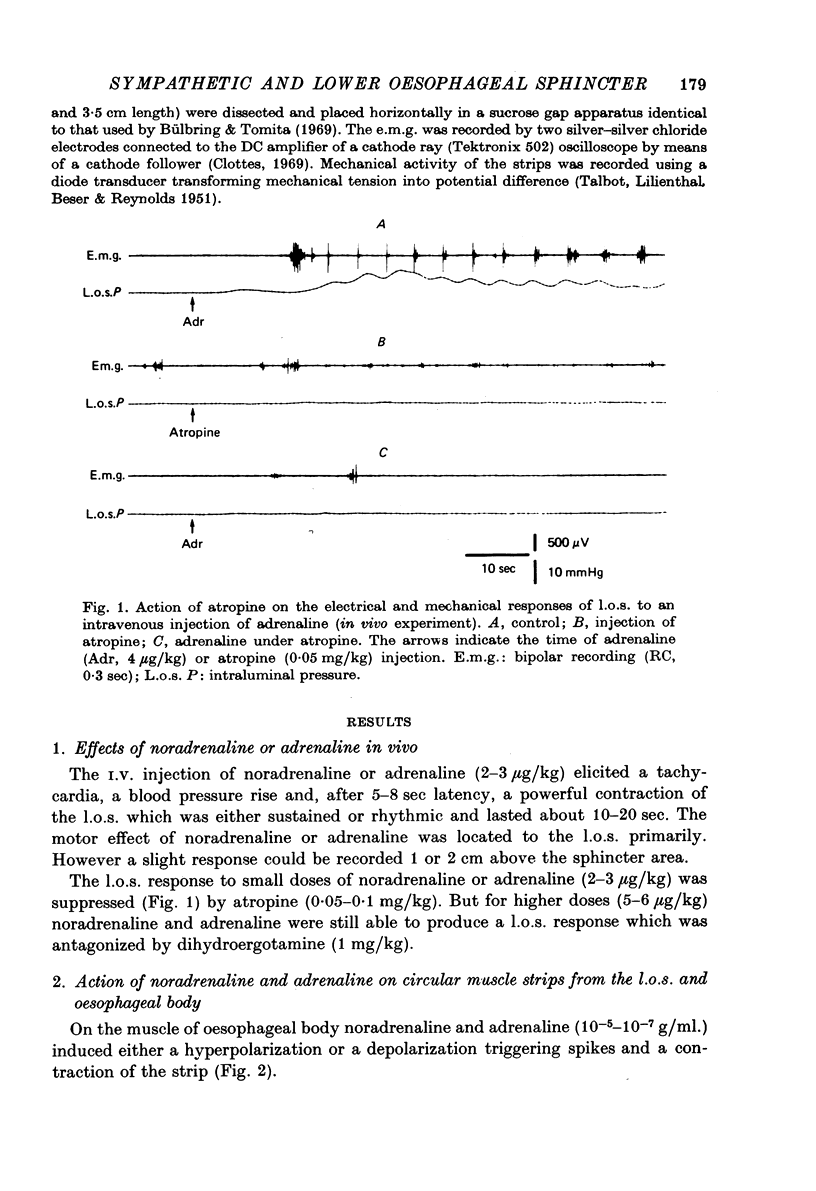
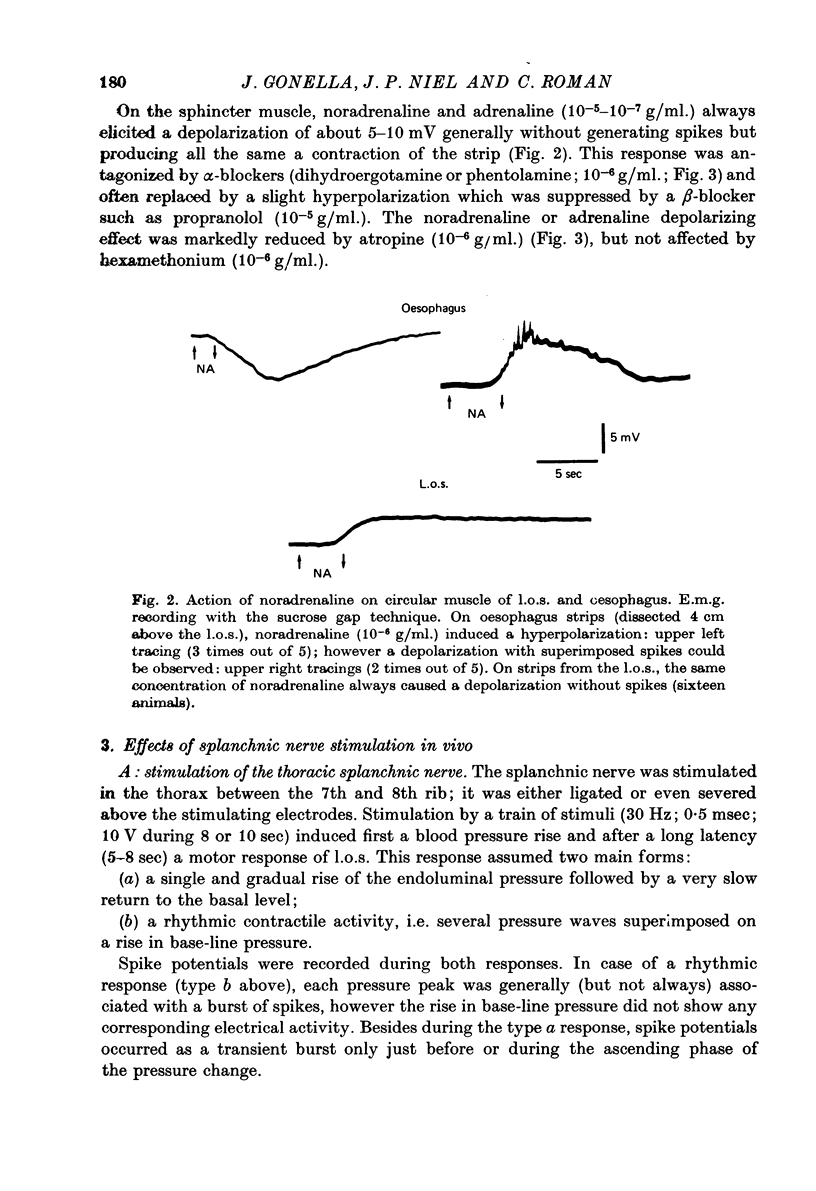
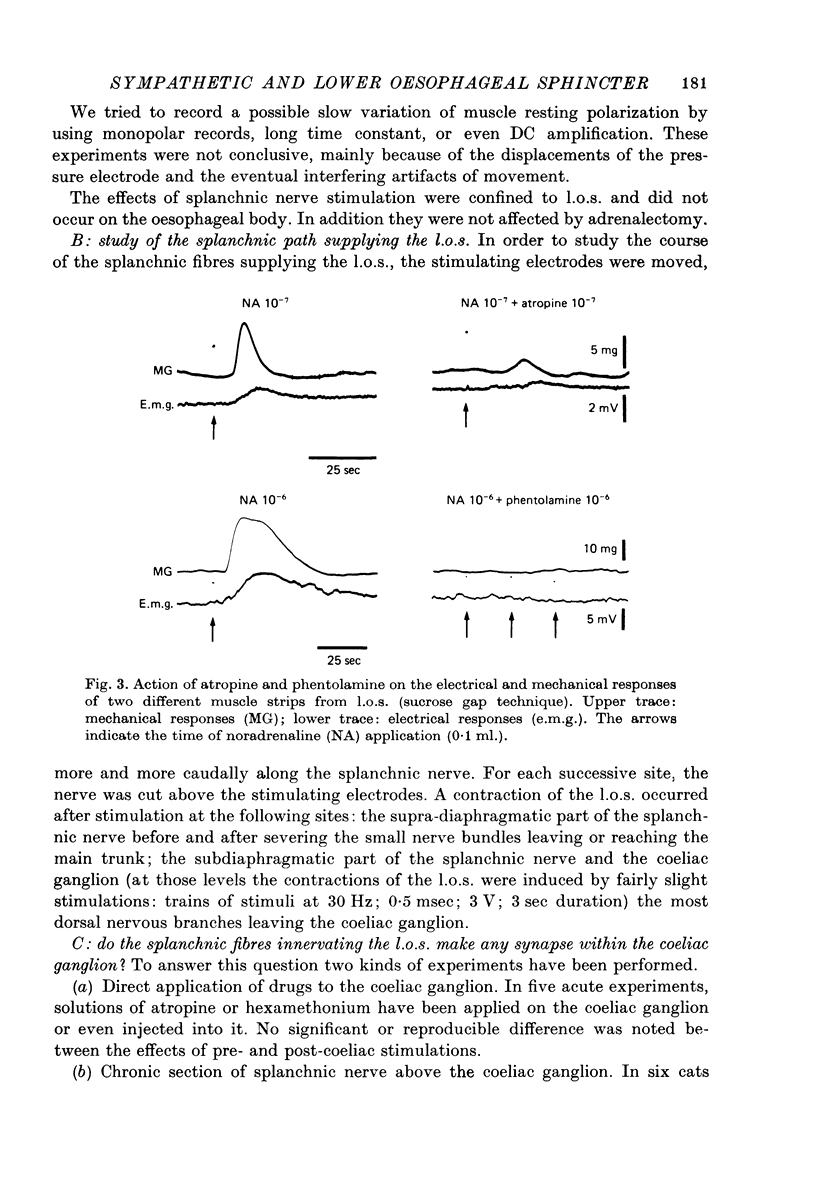
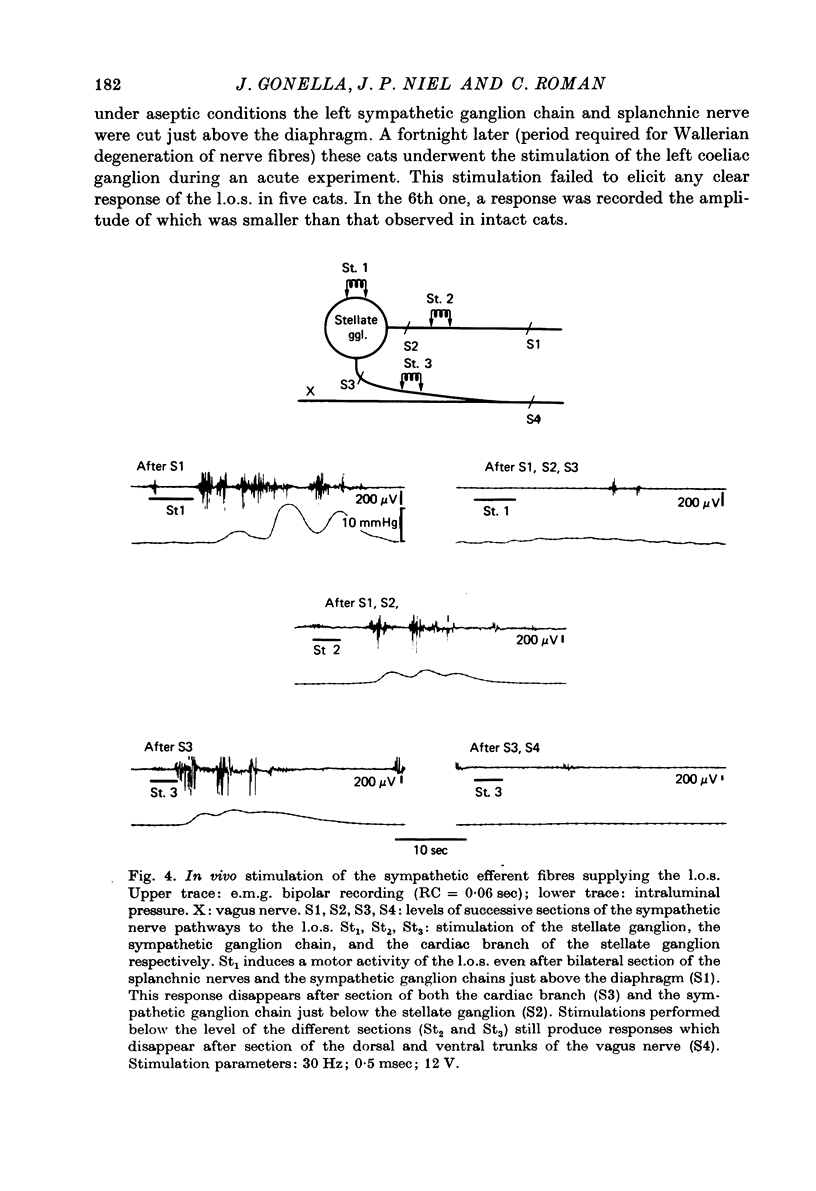
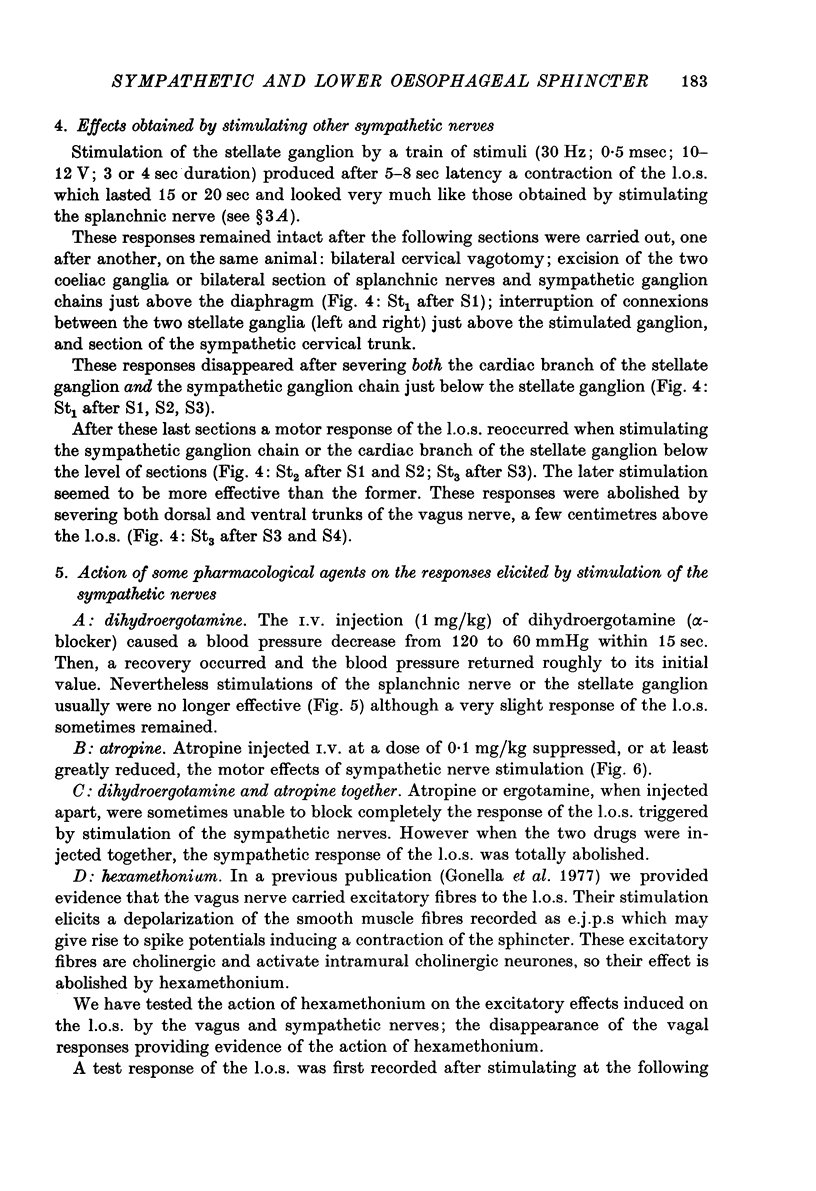
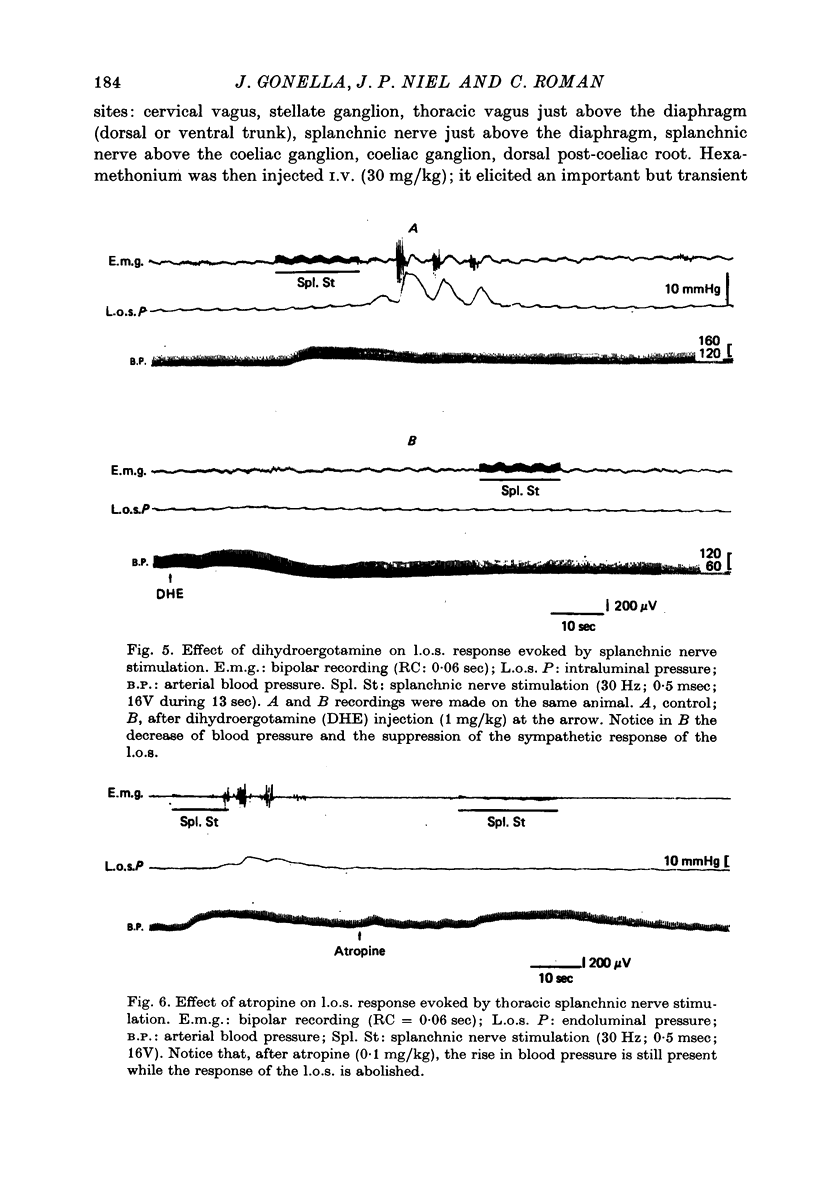
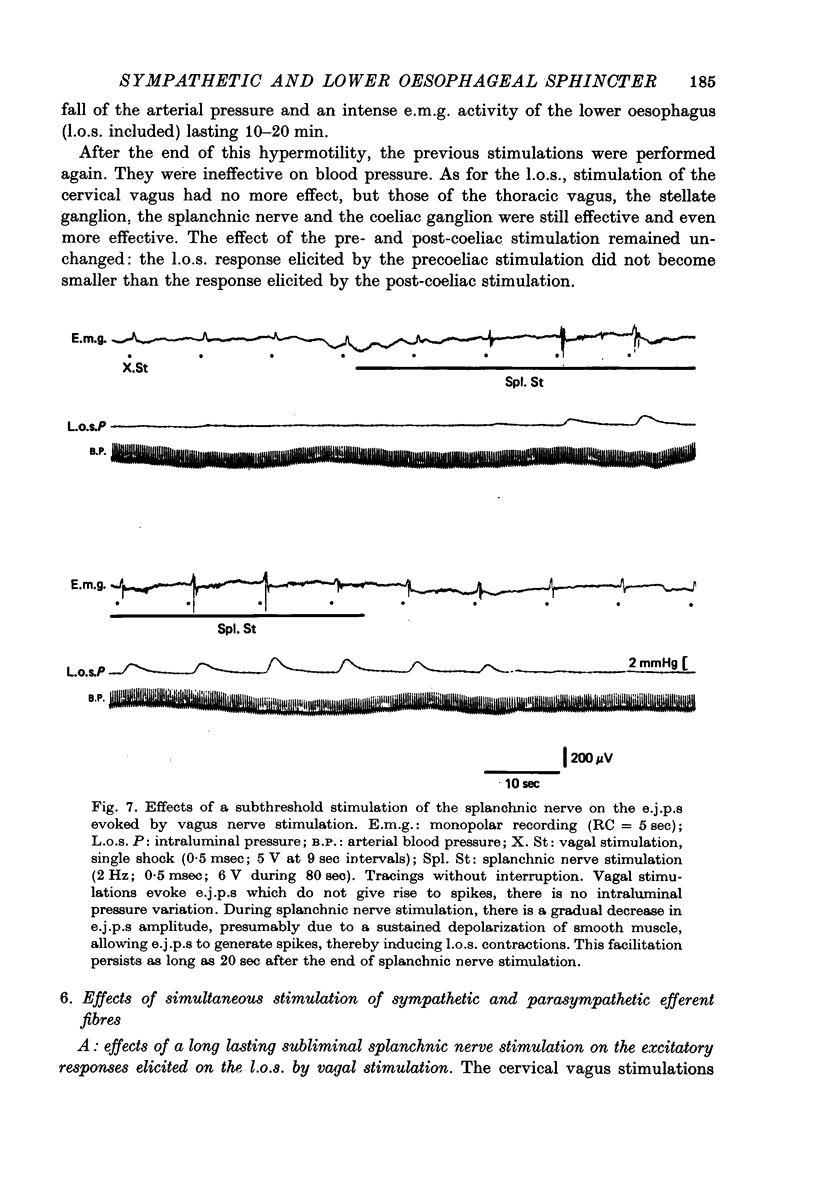
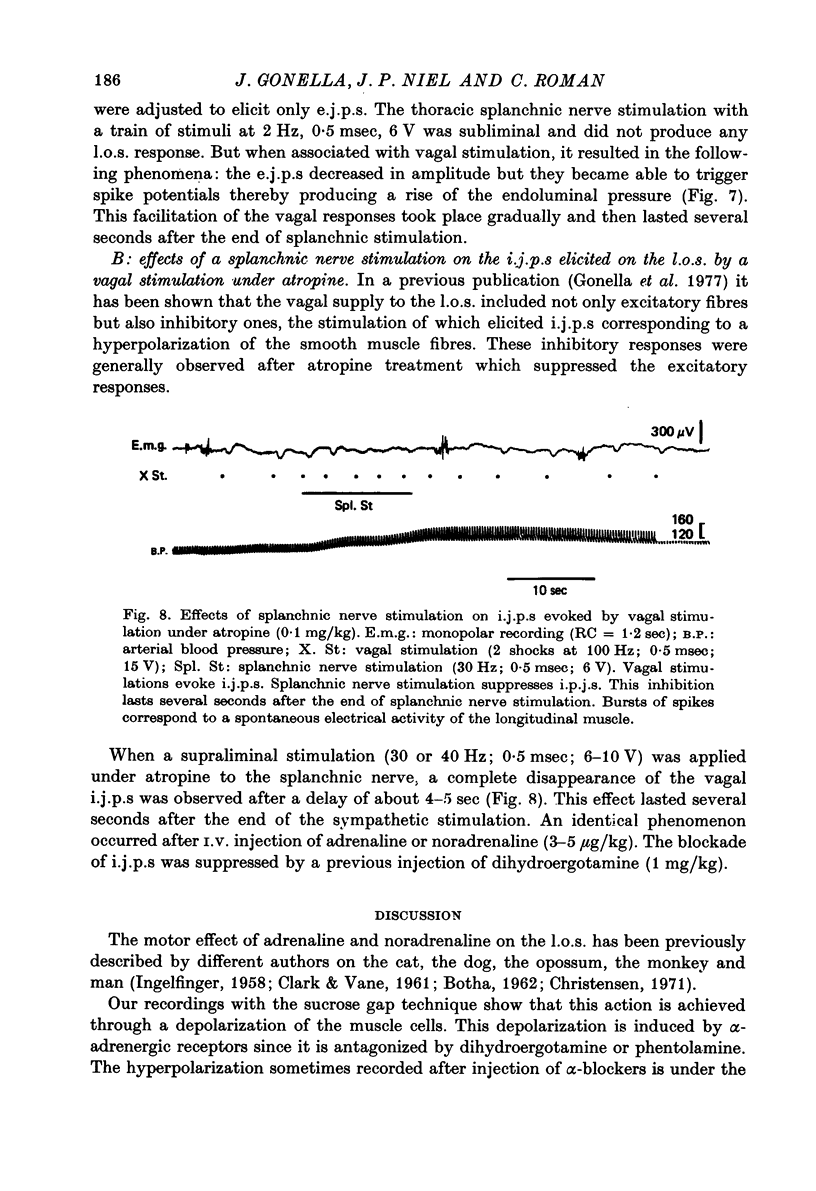
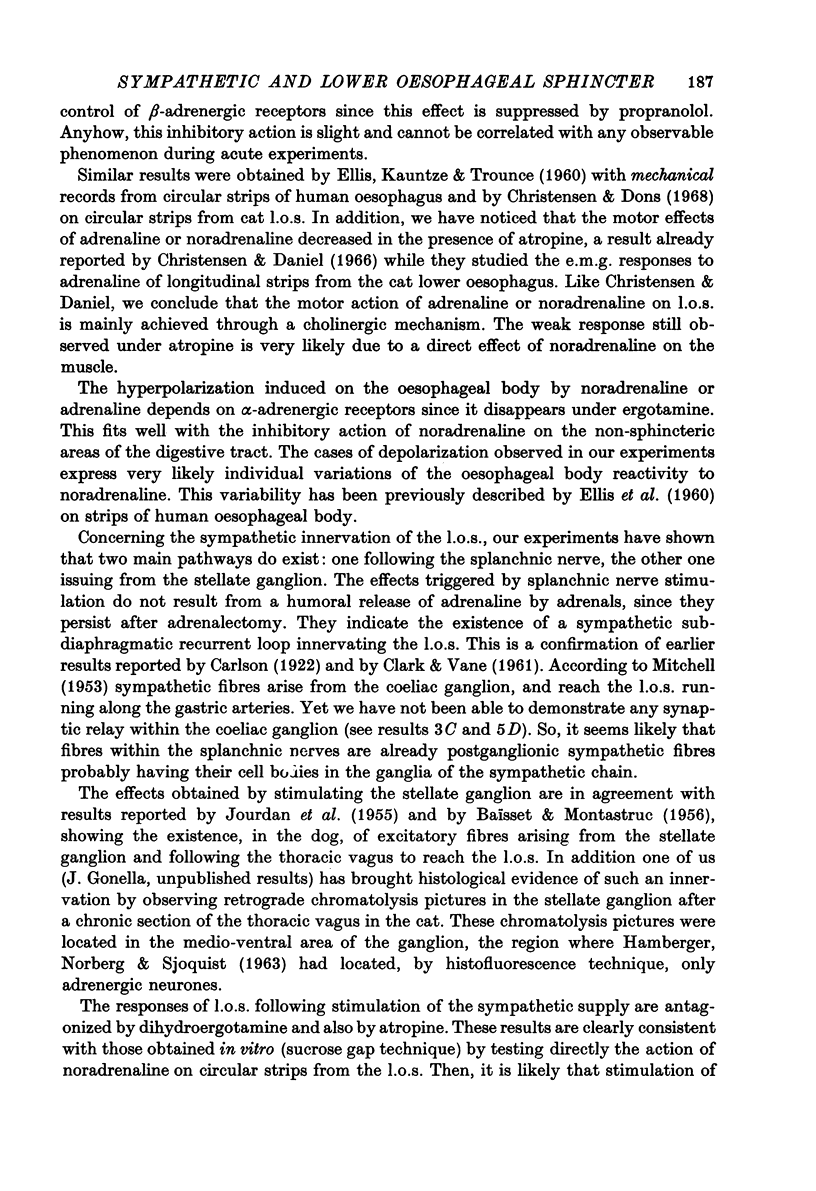
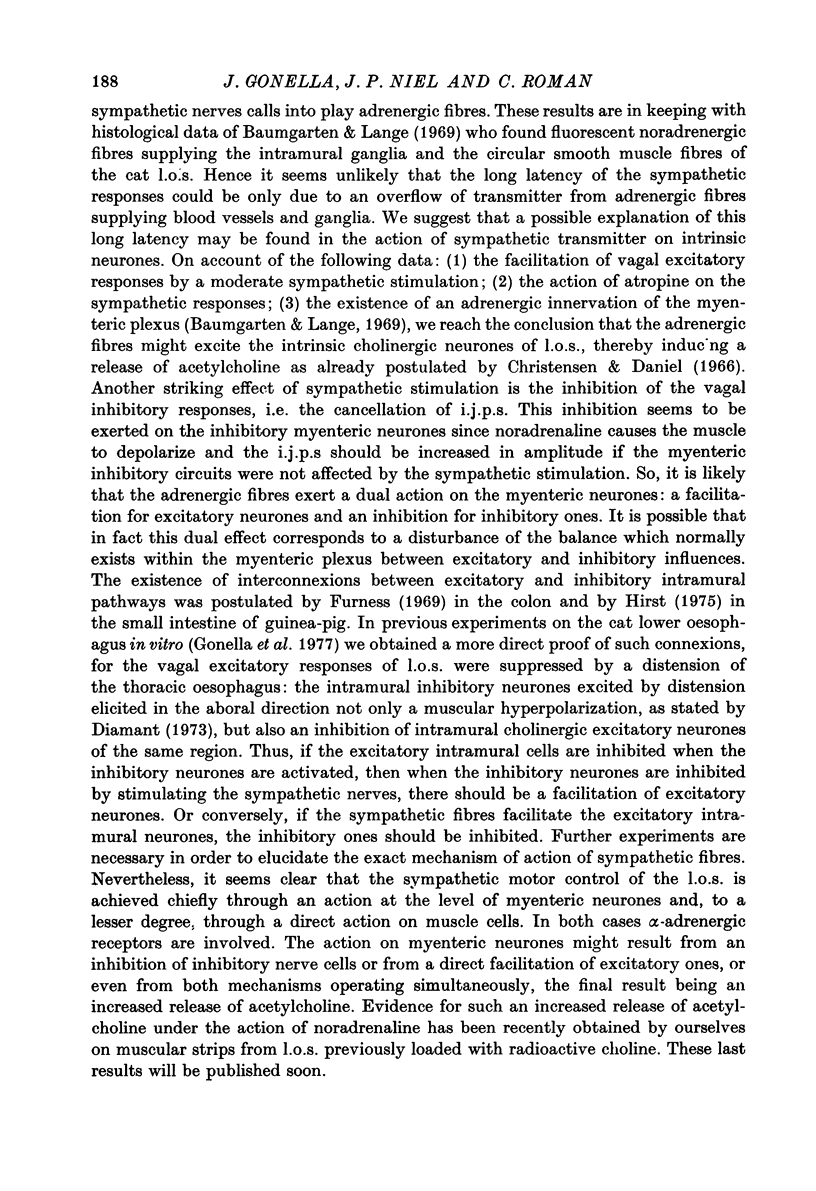
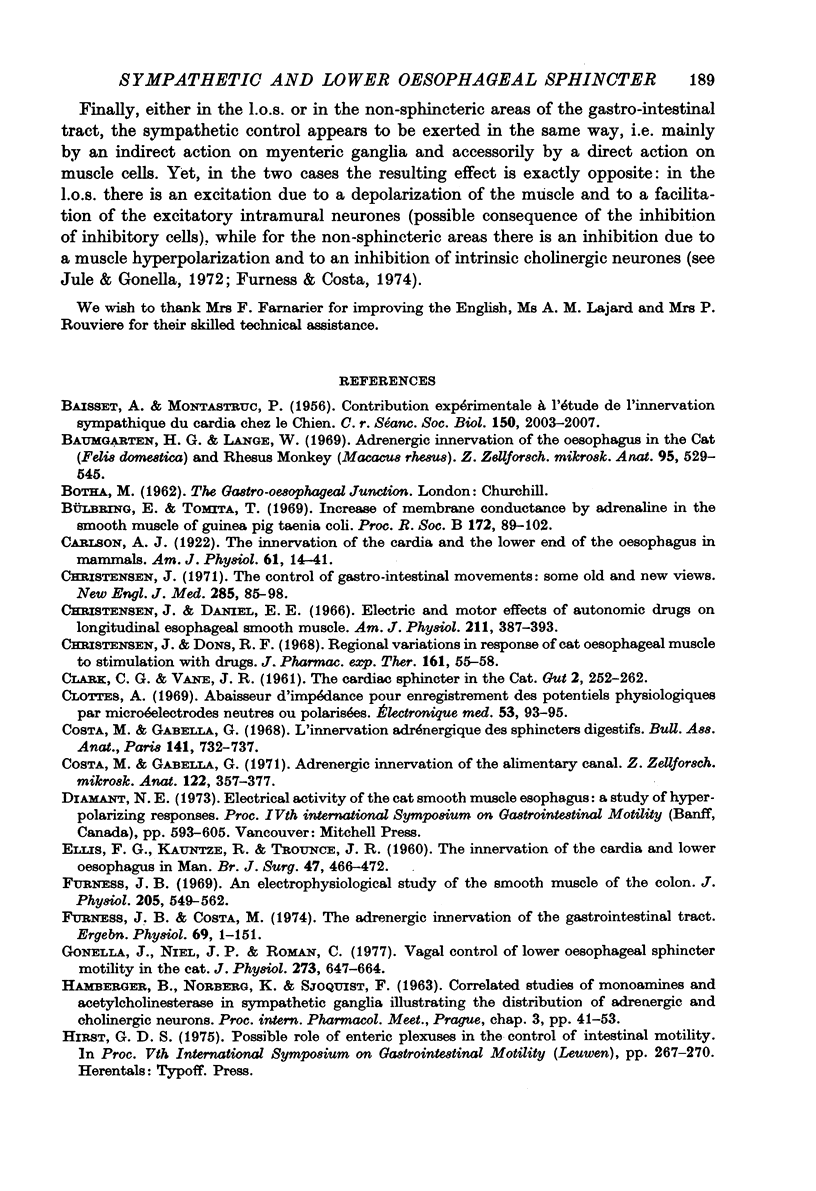
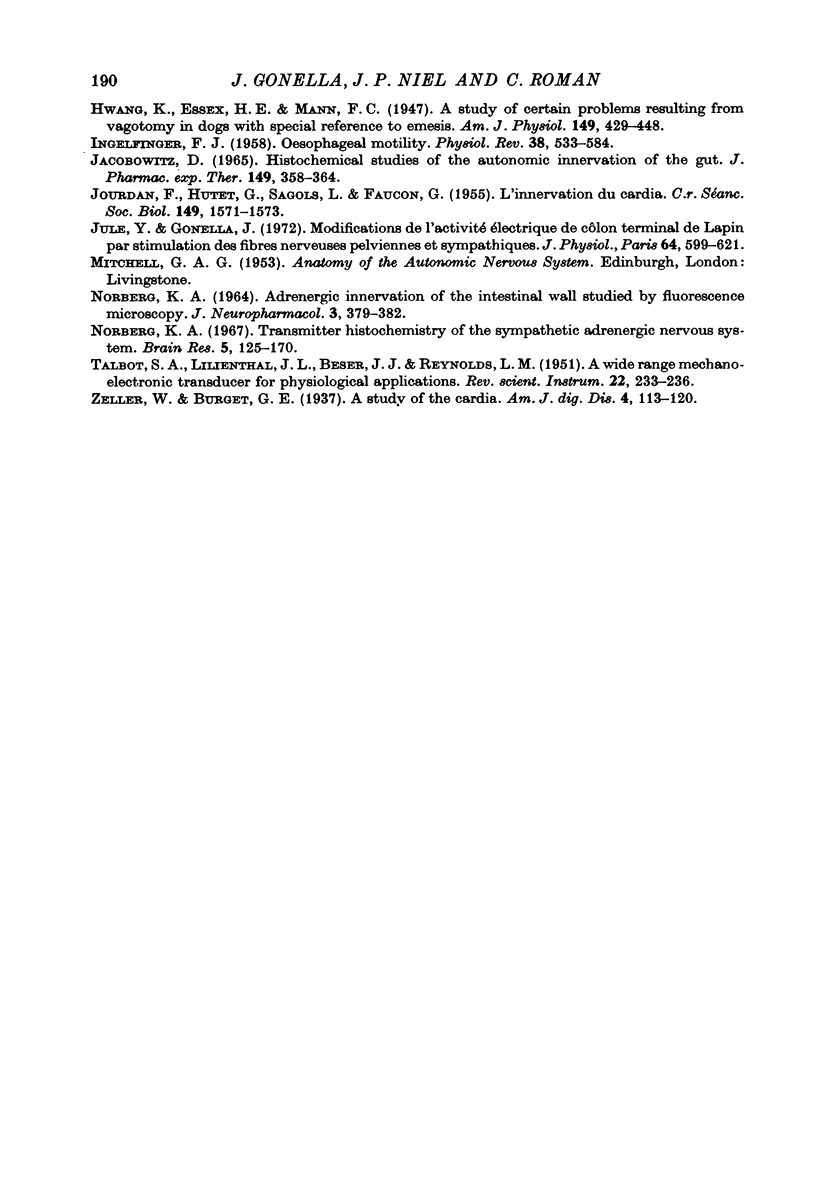
Selected References
These references are in PubMed. This may not be the complete list of references from this article.
- Baumgarten H. G., Lange W. Adrenergic innervation of the oesophagus in the cat (Felis domestica) and Rhesus monkey (Macacus rhesus). Z Zellforsch Mikrosk Anat. 1969;95(4):529–545. doi: 10.1007/BF00335146. [DOI] [PubMed] [Google Scholar]
- Bülbring E., Tomita T. Increase of membrane conductance by adrenaline in the smooth muscle of guinea-pig taenia coli. Proc R Soc Lond B Biol Sci. 1969 Mar 11;172(1027):89–102. doi: 10.1098/rspb.1969.0013. [DOI] [PubMed] [Google Scholar]
- CLARK C. G., VANE J. R. The cardiac sphincter in the cat. Gut. 1961 Sep;2:252–262. doi: 10.1136/gut.2.3.252. [DOI] [PMC free article] [PubMed] [Google Scholar]
- Christensen J., Daniel E. E. Electric and motor effects of autonomic drugs on longitudinal esophageal smooth muscle. Am J Physiol. 1966 Aug;211(2):387–394. doi: 10.1152/ajplegacy.1966.211.2.387. [DOI] [PubMed] [Google Scholar]
- Christensen J., Dons R. F. Regional variations in response of cat esophageal muscle to stimulation with drugs. J Pharmacol Exp Ther. 1968 May;161(1):55–58. [PubMed] [Google Scholar]
- Christensen J. The controls of gastrointestinal movements: some old and new views. N Engl J Med. 1971 Jul 8;285(2):85–98. doi: 10.1056/NEJM197107082850205. [DOI] [PubMed] [Google Scholar]
- Costa M., Gabella G. Adrenergic innervation of the alimentary canal. Z Zellforsch Mikrosk Anat. 1971;122(3):357–377. doi: 10.1007/BF00935995. [DOI] [PubMed] [Google Scholar]
- ELLIS F. G., KAUNTZE R., TROUNCE J. R. The innervation of the cardia and lower oesophagus in man. Br J Surg. 1960 Mar;47:466–472. doi: 10.1002/bjs.18004720503. [DOI] [PubMed] [Google Scholar]
- Gonella J., Niel J. P., Roman C. Vagal control of lower oesophageal sphincter motility in the cat. J Physiol. 1977 Dec;273(3):647–664. doi: 10.1113/jphysiol.1977.sp012115. [DOI] [PMC free article] [PubMed] [Google Scholar]
- INGELFINGER F. J. Esophageal motility. Physiol Rev. 1958 Oct;38(4):533–584. doi: 10.1152/physrev.1958.38.4.533. [DOI] [PubMed] [Google Scholar]
- JOURDAN F., HUTET G., SAGOLS L., FAUCON G. L'innervation du cardia. C R Seances Soc Biol Fil. 1955 Aug-Sep;149(15-18):1571–1573. [PubMed] [Google Scholar]
- Jacobowitz D. Histochemical studies of the autonomic innervation of the gut. J Pharmacol Exp Ther. 1965 Sep;149(3):358–364. [PubMed] [Google Scholar]
- Julé Y., Gonella J. Modifications de l'activité électrique du côlon terminal de lapin par stimulation des fibres nerveuses pelviennes et sympathiques. J Physiol (Paris) 1972;64(6):599–621. [PubMed] [Google Scholar]
- NORBERG K. A. ADRENERGIC INNERVATION OF THE INTESTINAL WALL STUDIED BY FLUORESCENCE MICROSCOPY. Int J Neuropharmacol. 1964 Sep;3:379–382. doi: 10.1016/0028-3908(64)90067-x. [DOI] [PubMed] [Google Scholar]
- Norberg K. A. Transmitter histochemistry of the sympathetic adrenergic nervous system. Brain Res. 1967 Jun;5(2):125–170. doi: 10.1016/0006-8993(67)90084-4. [DOI] [PubMed] [Google Scholar]
- TALBOT S. A., LILIENTHAL J. L., Jr, BESER J., REYNOLDS L. W. A wide range mechano-electronic transducer for physiological applications. Rev Sci Instrum. 1951 Apr;22(4):233–236. doi: 10.1063/1.1745898. [DOI] [PubMed] [Google Scholar]


